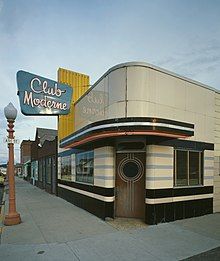Futuristic Interiors
- Jessie Desmond

- Jan 29, 2022
- 2 min read
Looking at futuristic interiors, whether real or digital or illustrated, feels super inspirational. It can influence architectural design, interior design, aerospace design, and can point us towards what we want and don't want.
Some Architectural & Design Terms
Mid-Century Modern - Mid-Century Modern (MCM) is an American design movement in interior, product, graphic design, architecture, and urban development that was popular from roughly 1945 to 1969, during the United States' post–World War II period. The MCM design aesthetic is modern in style and construction, aligned with the Modernist movement of the period. It is typically characterized by clean, simple lines and honest use of materials, and it generally does not include decorative embellishments.
Bauhaus - The Bauhaus style tends to feature simple geometric shapes like rectangles and spheres, without elaborate decorations. Buildings, furniture, and fonts often feature rounded corners and sometimes rounded walls. Other buildings are characterized by rectangular features, for example protruding balconies with flat, chunky railings facing the street, and long banks of windows. Furniture often uses chrome metal pipes that curve at corners. It can be considered "German modernism".
Brutalist - Brutalist buildings are characterized by minimalist constructions that showcase the bare building materials and structural elements over decorative design. The style commonly makes use of exposed, unpainted concrete or brick, angular geometric shapes and a predominantly monochrome color palette; other materials, such as steel, timber, and glass, are also featured.
Moderne - This architectural style is usually seen as a mix of traditionalism and modernism. It encompasses a variety of styles such as streamline moderne, mid-century modern, art deco, Scandinavian modern, communism moderne, and fascism moderne. These styles often utilize influences of new technology at the time, such as airplanes, trains, and space.
Industrial - Industrial architecture is based around function, rather than form. It serves the industrial world - brewing, factories, power plants, etc. Often times, there is an element of geometric shapes, patterns, and textures.
Neo-Futurism - Described as an avant-garde movement, as well as a futuristic rethinking of the thought behind aesthetics and functionality of design in growing cities.
Structural Expressionism - Structural expressionism, is a type of Late modernist architecture that emerged in the 1970s, incorporating elements of high tech industry and technology into building design. High-tech architecture grew from the modernist style, utilizing new advances in technology and building materials. It emphasizes transparency in design and construction, seeking to communicate the underlying structure and function of a building throughout its interior and exterior. High-tech architecture makes extensive use of aluminum, steel, glass, and to a lesser extent concrete.
Cyberpunk - Cyberpunk is a subgenre of science fiction in a dystopian futuristic setting that tends to focus on a "combination of lowlife and high tech", featuring futuristic technological and scientific achievements, such as artificial intelligence and cybernetics, juxtaposed with societal collapse or decay.
Vaporwave - While this is a subgenre of electronic music that is known for being chill, it has also brought around a design aesthetic that involves a futuristic style mixed with the nostalgic past (especially the 80s), neon colors/lighting, glitch art, and technoculture.
Let's look at some stuff. See if you can figure out what styles become incorporated into these spaces. What do you like? What do you not like? What would you like to see expanded upon? Can you design a futuristic space?































































































Comments